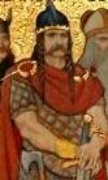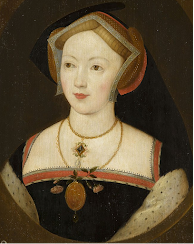“One picture is worth a thousand words.” Fred R. Barnard
After compiling and documenting the Rockett Complete Ancestry at my lineage website https://rockettslanding.neocities.org/RockettCompleteAncestry, I inserted a paragraph listing notable ancestors. Since most of us have never heard of many of these people, I decided to look for pictures and interesting facts about these ancestors that might help us appreciate their lives.
Alfred the Great (849-899) silver penny ~875-880 A.D. By Classical Numismatic Group, Inc. http://www.cngcoins.com, CC BY-SA 2.5, https://commons.wikimedia.org/w/index.php?curid=142995994
- u Was the most famous king of the Anglo-Saxons
- u Defended Wessex against the Vikings
- u Introduced reforms in defense measures, law, and coinage
- u Made Prague the administrative center
- u First king of Poland and promoted the spread of Christianity
- u Improved economic development by adding territories
Charlemagne (748-814) silver coin ~813 By PHGCOM - Own work by uploader, photographed at Cabinet des Médailles, Paris., Public Domain, https://commons.wikimedia.org/w/index.php?curid=5729324
- u United most of Europe spreading Christianity
- u Reformed military, economic and governmental areas
- u Reformed cultural, educational and religious areas of life for everyone
Duncan I “The Diseased” (1001-1040) 17th century portrait By Jacob de Wet II, Gallery in Holyrood Palace https://www.britannica.com/biography/Duncan-I#/media/1/173642/10196
- u First king of Scotland of the House of Dunkeld
- u Was neither a very good nor a very popular king
- u Made famous by Shakespeare regarding his murder by his cousin, MacBeth
Richard de Clare (1153-1217), 3rd Earl of Hertford, Appointed to Secure the Observance of the Magna Carta By Henry Timbrell at the Parliamentary Art Collection https://artuk.org/discover/artworks/baron-richard-de-clare-d-1217-earl-of-hertford-appointed-to-secure-the-observance-of-the-magna-carta-279642
- u Played a leading part in the negotiations with the King for Magna Carta
- u Is one of the 25 sureties for the Magna Carta
- u Expanded his wealth and land for his descendants
- u Is one of the 25 sureties for the Magna Carta
- u Fought King John after the King rejected the Magna Carta
- u Witnessed Henry III’s reissue of the Magna Carta
Saher IV de Quincy (1165-1219), 1st Earl of Winchester By Carol Baldwin 7 Jun 2018, Temple Church, London, England https://www.wikitree.com/photo/jpg/Quincy-226-2
- u Heavily involved in the negotiations that led to the Magna Carta
- u Is one of the 25 sureties for the Magna Carta
- u Was a crusader in the 5th crusade
- u Founded the House of Lancaster
- u Skilled in diplomacy and war
- u Was the most powerful baron in England
- u Noted for his military success
- u Restored royal authority after the disastrous reign of his father, Edward II
- u Founded the Order of the Garter in 1348, an order of chivalry still in existence
- u Effective military leader in the Hundred Years’ War
- u Became an influential statesman during the minority reign of Richard II
- u Fathered Henry IV, the first Lancastrian king
- u Founded a dynasty that united the Picts and Gaels founding the Kingdom of Alba
- u Credited with setting the ancient Stone of Destiny at Scone, Scotland
- u Successfully drove off the Vikings
- u Determined to help the people of Coventry get lower taxes levied by her husband, she defied him by riding naked on horseback through the town
- u Founded a Benedictine monastery in Coventry
- u Known for her generosity to the church
- u Was a mistress of Henry VIII and bore him two sons
- u Was a mistress of King Francis of France
- u Kept her head unlike the other Boleyns
- u Was first Duke of Brittany and Father of the Bretons
- u Defeated Charles the Bald
- u Became a crowned king and independent ruler of the Bretons
- u Freed Scotland from English rule by winning the Battle of Bannockburn
- u Donated five pounds every year to the Auld Kirk in Cullen after the death of his wife, Elizabeth, in 1327, which is still being paid to this day
- u Was a hero of the people
- u Founded the Duchy of Normandy
- u Laid siege to Paris for 13 months with a fleet up to 700 ships
- u Was an independent Viking raider, warrior and leader
William the Conqueror (~1027-1087), Stone Bust, 14th century, Jumièges Abbey By Philippe Alès, CC BY-SA 4.0 https://creativecommons.org/licenses/by-sa/4.0 via Wikimedia Commons
- u Invaded England in 1066 and won the Battle of Hastings
- u Introduced the mote and bailey castle system of a keep on raised ground surrounded by a walled courtyard and ditch
- u Ordered a census to be taken called the Domesday Book
- u Fought under William the Conqueror at the Battle of Hastings in 1066
- u Held extensive lands in 13 counties in the Domesday Book
- u Was one of four prominent Normans appointed to govern England during William the Conqueror’s absence




























